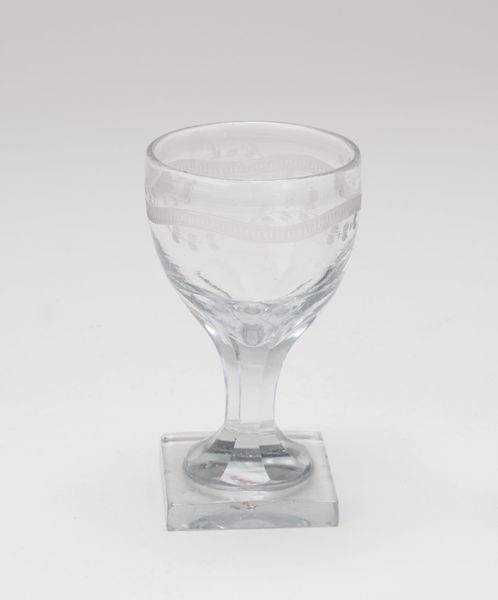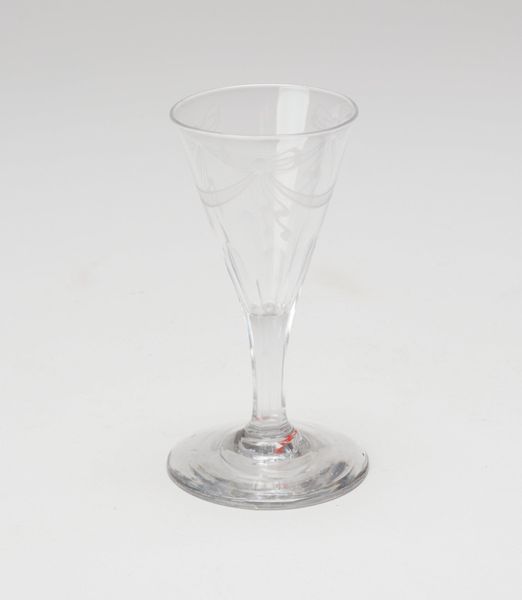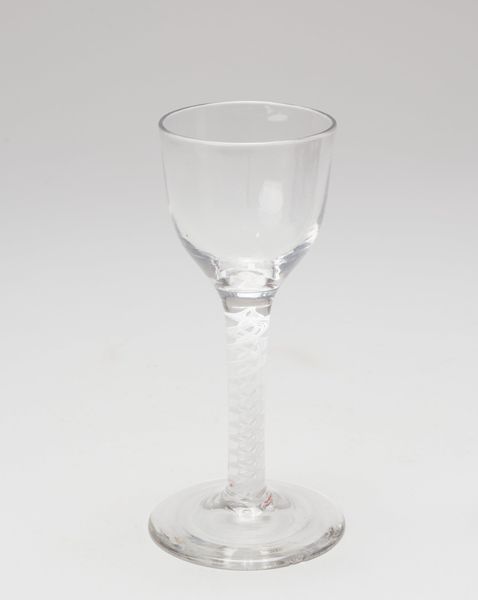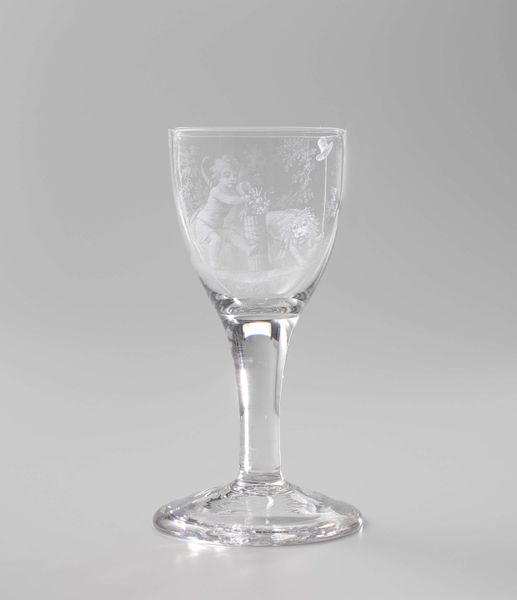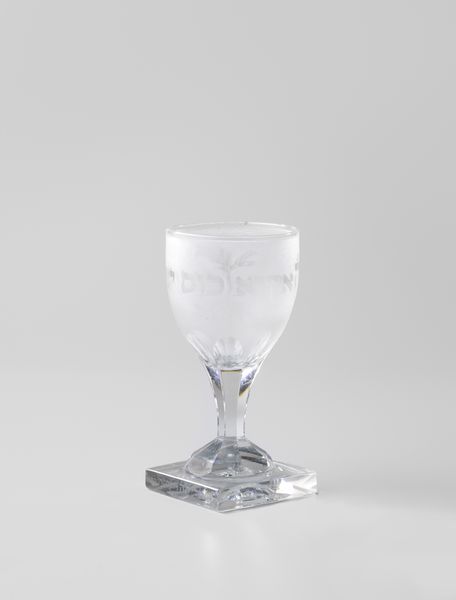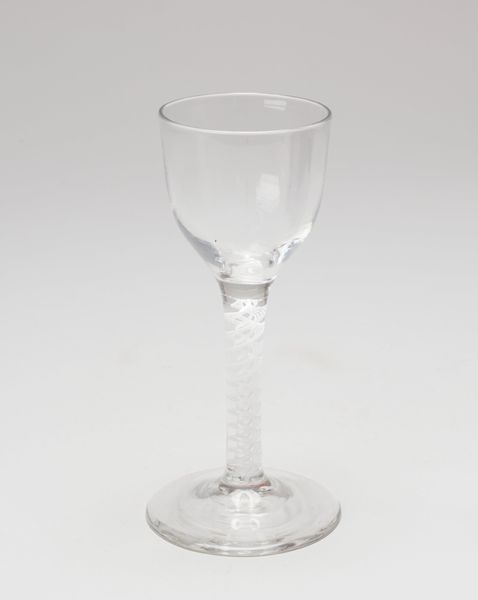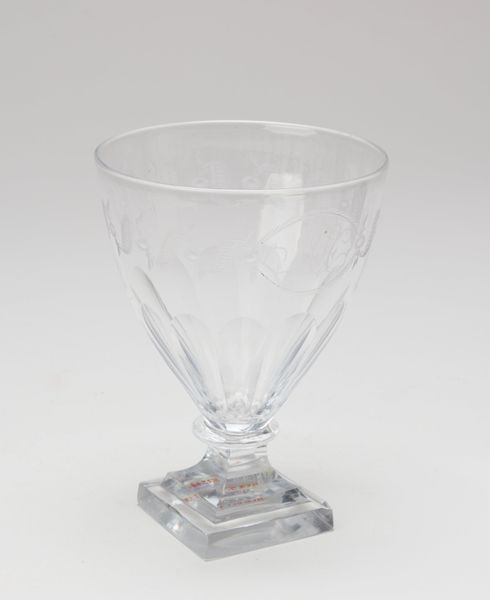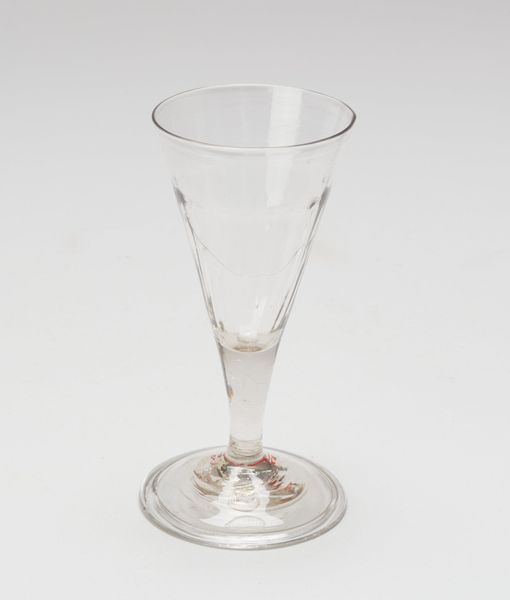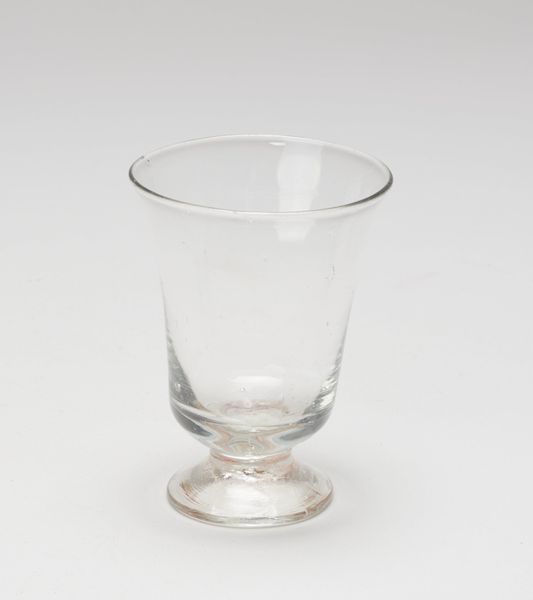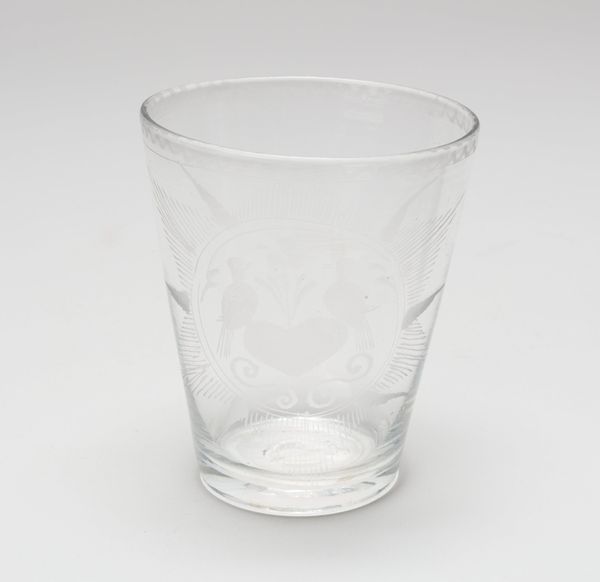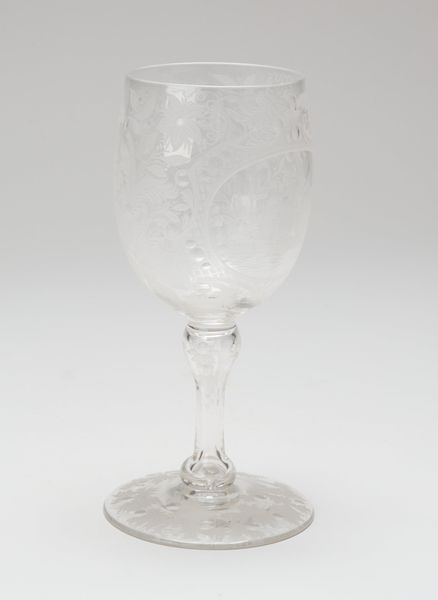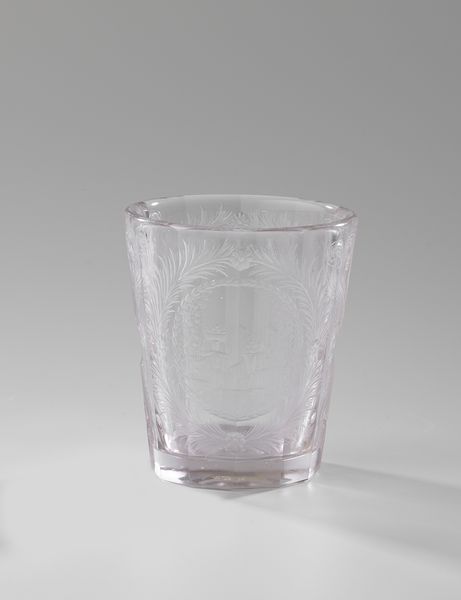
glass
#
glass
#
ceramic
Dimensions: 4 3/4 x 3 x 3 in. (12.07 x 7.62 x 7.62 cm)
Copyright: Public Domain
Editor: This is "Wine Glass," believed to be from the 19th century, housed here at the Minneapolis Institute of Art. It's crafted from glass. The simple square base is quite striking, almost geometric. How would you interpret the choices made in its design, specifically its structural form? Curator: Focusing solely on its form, consider the geometry employed. The square base provides a stable foundation, contrasting with the curvature of the bowl. Note the engraved frieze; its subtle linear patterns create visual interest without disrupting the overall clarity. Does the geometric interplay evoke any particular sensation, perhaps a feeling of grounded elegance? Editor: I see what you mean about grounded elegance. The square base really anchors the piece, providing this feeling of stability and stark contrast. I initially overlooked how this contrasts the more traditional curved body of the wine glass. Could we expand on that further? Curator: Indeed. This contrast between the square base and the round bowl invites contemplation. How does this interplay of shapes affect your reading of the piece as a functional object? Also, consider the clarity of the glass. Is it merely a transparent material or an active participant in the form itself? Editor: It almost seems that the pure and clear glass prioritizes our view of what's inside. Its purpose isn't merely as a drinking vessel, but as a medium for presenting wine as clearly and purely as possible. Looking closely, that ornamental band close to the rim of the glass looks almost… architectural in the way that it presents the geometric designs, like something you’d find decorating the top of a building. Curator: Precisely. The ornamental band underscores the structure while also leading the eye and creating spatial organization. Ultimately, the “Wine Glass,” stripped of extraneous contextual cues, embodies a study in geometric form and material transparency. Editor: I hadn't considered how the materials influenced the visual structure until now. The glass almost isn’t there, but very consciously showcases its internal geometries as part of a greater composition.
Comments
No comments
Be the first to comment and join the conversation on the ultimate creative platform.
